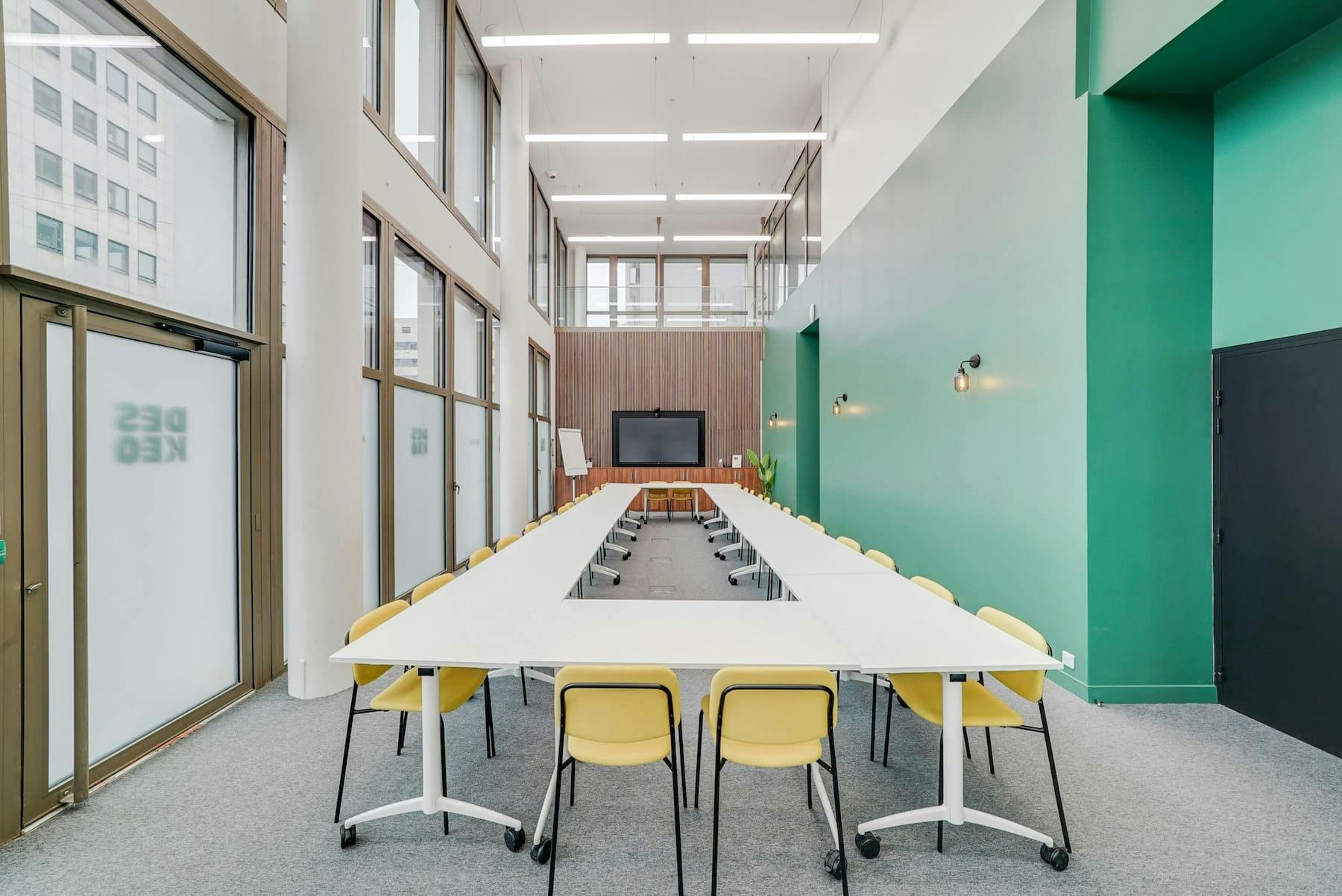

How to organize an effective team meeting?
Did you know that 56% of meetings are considered unnecessary by employees? Acute meetingitis has a thick skin in the workplace. According to a study conducted by the Yougov Institute, a large majority of French employees would like their meetings to be better organized. Half of them often don't know why they attend these meetings.
And yet, team meetings are key moments for collaboration and productivity within a company. However, running an efficient meeting requires careful planning and appropriate strategies. From the definition of clear objectives to the commitment of all participants, each step plays an important role in the success of these meetings.
Whether you're a manager, project leader or team member looking to improve the quality of team meetings, our guide aims to provide you with practical advice on how to optimize the preparation of your next team meeting. Discover how to transform your meetings into moments of dynamic collaboration and strategic decision-making. We'll explore the key steps to structuring the agenda, encouraging active participation, managing time effectively and achieving concrete results.
Team meeting: definition and benefits
Team meeting: what is it?
By definition, a team meeting represents a scheduled appointment where members of a team come together to address specific topics, set out in an agenda established by the organizer. A team meeting enables participants to plan and implement various actions to promote the company's development and the smooth running of the team.
Why team meetings are important in the company ?
As mentioned above, the importance of team meetings in the company is often discussed. However, exchanges by email or via instant messaging platforms like Teams or Slack aren't enough to manage everything. These platforms are useful for passing on quick information, but can lack subtlety. Sometimes, face-to-face communication proves indispensable, if not more productive and efficient.
In this context, team meetings not only enable the transmission of essential information, but also foster collaboration, problem-solving and collective decision-making, thus aligning individual objectives with those of the team and the organization. What's more, they stimulate creativity, encourage active commitment and strengthen the sense of belonging within the group.
How to prepare effectively for a team meeting?
Anticipating and preparing for team meetings
Anticipating a meeting involves precisely defining its objectives. For example, for a meeting to discuss marketing strategies for a new product, anticipating might involve gathering performance data from previous similar products. This would provide a clear picture of the context and lessons learned to feed into the discussions.
Then, it's essential to prepare the materials needed to support the discussions. This could include the creation of detailed visual presentations, the collection of relevant data or the preparation of reports synthesizing key information. For example, providing comparative graphs of past product performance can enrich discussions and help inform decisions at the meeting.
Setting meeting objectives and agenda
Explicitly specifying the objectives of a team meeting is crucial. Define precisely the concrete results the team aims to achieve by the end of the meeting. For example, if the main objective is to evaluate the marketing department's quarterly performance, the sub-objectives could be to analyze in detail the key performance indicators (KPIs), resolve any problems identified and develop strategies to improve results.
The creation of the meeting agenda flows directly from these objectives. Structure the agenda in a logical, hierarchical way. For example, start with priority items such as the key results to be discussed, followed by more specific items such as the identification of challenges faced by the team. This ensures that the meeting progresses in a coherent way, and that each topic is given the time it needs, according to its importance in achieving the objectives set.
Defining a precise agenda also guides participants on what is planned, helping them to prepare accordingly. Sharing this agenda in advance enables them to gather the necessary information, think about potential solutions and be ready to contribute constructively to the meeting.
Leading a team meeting: techniques and tips
Facilitation techniques to energize the meeting
To energize a team meeting, you can use visual methods such as interactive whiteboards, presentations prepared in advance (on Power Point, Figma, Canva or other) or screen sharing. They help to present information visually, arouse participants' interest and energize exchanges by making discussions more interactive and lively.
Don't hesitate to integrate brainstorming sessions or organize stand-up meetings. By encouraging members to share their ideas freely, these moments encourage creativity and the emergence of innovative solutions. Similarly, introducing role-playing or simulations can be beneficial for tackling complex or tricky topics, while encouraging collaboration and strengthening team cohesion.
Encouraging exchange and discussion
Creating a participative environment encourages a diversity of exchanges and paves the way for the exploration of innovative solutions.

To encourage these exchanges, it's essential to create an environment where everyone feels comfortable expressing themselves. Encouraging participation by asking open-ended questions, soliciting opinions and valuing ideas helps to create a climate of listening and sharing.
In addition, ensuring a balanced distribution of the floor is essential. Ensuring that everyone has the opportunity to express themselves reinforces the feeling of inclusion. For example, during a brainstorming session, giving each member time to present his or her ideas on a given topic ensures that all perspectives are heard and taken into account. Don't forget that every employee has a different personality. For some, expressing themselves in a meeting is easy, while for others it may be more difficult, requiring extra support to be heard. As mentioned above, sharing the agenda in advance enables more reserved people to prepare themselves better by knowing the topics to be discussed, which helps them to formulate their ideas and arguments in advance.
After the meeting: report and evaluation
How to write an effective report?
An effective meeting doesn't end with the closure of the discussion; it requires a debriefing phase to consolidate the actions taken.
To write effective reports, it's essential to include the key points discussed during the meeting, including decisions made, actions to be taken and responsibilities given to each participant. To this end, don't hesitate to ask for the meeting to be recorded. This allows you to concentrate fully on the discussions in progress, rather than just taking notes.
For the report, organize it in a structured way, using a clear and concise presentation of information to facilitate understanding for all recipients. Be sure to include deadlines for each action taken. The aim is to maintain traceability and follow-up of tasks. You may also consider adding a glossary at the end of the e-mail if it is to be shared with people who may not be familiar with all the terms used.
Evaluate the meeting to improve future ones
Evaluating the meeting is an important step in identifying strengths and areas for improvement. Solicit feedback from participants on the relevance of the agenda, the quality of discussions and time management. Also analyze the results obtained in relation to the objectives initially set. This evaluation helps identify effective practices to maintain and adjustments needed to optimize the productivity and efficiency of future meetings.
Optimize your meetings with digital tools
To improve the efficiency of your team meetings, don't hesitate to use appropriate digital tools.
Videoconferencing platforms such as Zoom or Microsoft Teams offer screen-sharing and real-time collaboration features.
Task management applications like Trello or Asana make it easy to keep track of actions decided during meetings.
Online survey tools such as Mentimeter can be used to quickly gather participants' opinions.
By using these tools in an appropriate and integrated way, meetings become more interactive, better organized and encourage more active participation, leading to more effective results.

Contact Us
We find your Perfect fit!

